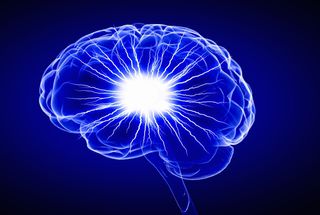Boys' and Girls' Brains May Show Opposite Effects After a Trauma

Traumatic events may affect the brains of boys and girls differently, a new study finds.
Among boys in the study, a brain area called the anterior circular sulcus was larger among those who had symptoms of a trauma, compared with a control group of boys who did not have any trauma symptoms. But among girls in the study, this brain region was smaller among those who had trauma symptoms.
The region is associated with emotional awareness and empathy, the researchers said.
The scientists said they were surprised to see that "the boys and girls were so clearly on different ends of the spectrum," said Megan Klabunde, the lead author of the study and a psychologist and neuroscience researcher at Stanford University School of Medicine. [10 Things You Didn't Know About the Brain]
The researchers compared the size of this brain region in the boys in the control group with that of the girls in the control group, finding that the region was of approximately similar size in both groups.
A potential explanation for these results is that "exposure to traumatic stress may impact brain development rates" differently in boys than in girls, the researchers said. However, because the study was conducted at a single point in time, it's not possible to know whether there is a cause-and-effect relationship — in either girls or boys — between trauma and the size of this brain region, the investigators said.
In the study, the researchers scanned the brains of 59 children ages 9 to 17, using a type of scan called structural magnetic resonance imaging (sMRI). There were 29 children total in the control group, and there were 30 children in the group that had symptoms of trauma, such as mood changes, and mentally re-living their traumautic events. These children had experienced a traumatic event more than 6 months prior to the start of the study.
Sign up for the Live Science daily newsletter now
Get the world’s most fascinating discoveries delivered straight to your inbox.
The researchers compared the size of the anterior circular sulcus, located within a brain region called the insula, which plays a role in people's emotions, awareness and empathy.
However, "the insula doesn't work in isolation," Klabunde told Live Science. Rather, this region is connected to other parts of the brain, which are also involved in emotion processing and empathy, she said.
Previous studies have shown that about 8 percent of girls and 2 percent of boys develop post-traumatic stress disorder sometime during their lifetime. Girls, in general, are more likely to develop the condition than boys are.
The researchers noted that their study had a relatively small number of participants. In addition, the research did not specifically study the impact of factors such as the time since the trauma, the age of the participant when the trauma first occurred, the severity of the trauma and other potential stressors that may also affect changes in the brain.
Future studies may shed light on how trauma affects other brain structures related to empathy, and whether these effects also show gender differences, the researchers said.
Additionally, further research may also help scientists determine whether these physical differences in the brain in turn lead to behavioral differences between boys and girls, the scientists said. Such research could help psychiatrists develop gender-specific treatments for boys and girls who have suffered traumatic events, the researchers said.
Originally published on Live Science.
Most Popular





